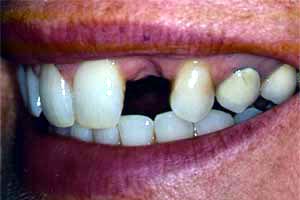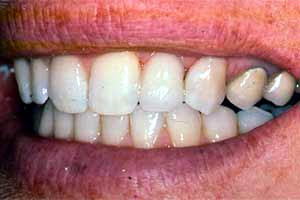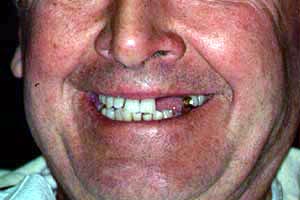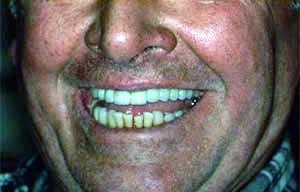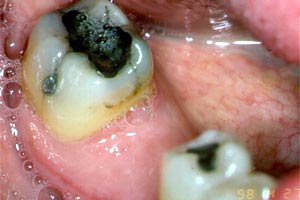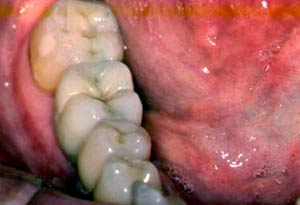Fixed bridges, usually made of gold (or porcelain faced gold) are used to replace missing teeth.
Losing a tooth starts a cycle of destruction within your mouth. In normal, healthy mouths, teeth have a natural balance. Each upper tooth contacts the corresponding lower tooth, allowing for a well-balanced chewing function. Losing a tooth can quickly subject the mouth to unfavourable conditions and with each lost tooth, the problems are magnified and the destructive cycle continues.
A fixed bridge will not only replace missing teeth, it will also help create a normal bite, prevent stress on the dental ridge, eliminate over eruption of opposing teeth, prevent the drifting and tilt of adjacent teeth, inhibit decay in abnormal areas and slow the onset of periodontal disease.
Fixed bridges are easily attached to abutment teeth. The pontic (part of the bridge, which actually replaces the missing tooth) is attached to a crown, which is then affixed to the abutment teeth. The entire bridge is then cemented in place. This work takes only a few office visits to complete.



